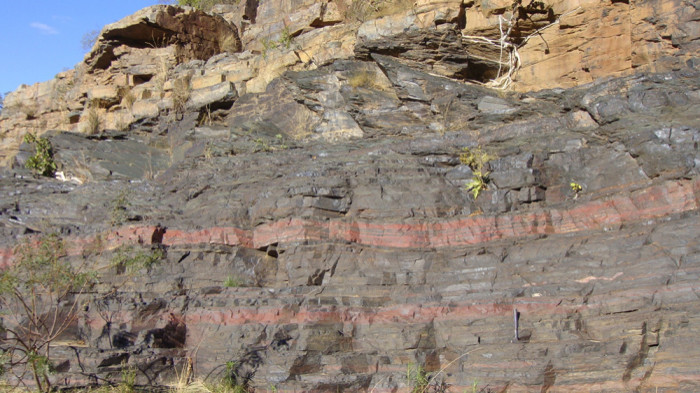Oxygen Appeared On Earth 700 Million Years Earlier Than Previously Thought: Study

Oxygen appeared on Earth about 700 million years earlier than previously thought, according to new research. The find could revise our timeline of how life evolved on this planet.
Today, we enjoy an atmosphere with 20 percent oxygen, but the air wasn’t always quite so breathable. Most scientists think we owe our oxygen environment to tiny microorganisms called cyanobacteria, which make the element as a byproduct of photosynthesis. For eons, the oxygen produced by these tiny creatures was immediately trapped by iron and other materials. But eventually, these oxygen “sinks” got filled up and couldn’t contain the waste from the bacteria; oxygen started invading the atmosphere. The new atmosphere proved poisonous to many of the non-oxygen breathing life forms on Earth at that time, but shaped the planet to be welcoming to a new class of “aerobic” creatures that dominate the globe today.
Scientists have long assumed that the tipping point for Earth’s atmosphere, called the Great Oxygenation Event, occurred about 2.3 billion years ago. But now, researchers from the University of British Columbia and the University of Copenhagen say that oxygen was at appreciable levels in the atmosphere about 3 billion years ago. They outlined their work in a paper published in the journal Nature on Wednesday.
UBC researcher Sean Crowe and his colleagues examined South African soils dating back billions of years, looking for signs of ancient chemical reactions involving trace amounts of atmospheric oxygen. When they detected these signatures, the team used mathematical models to extrapolate from the reaction to an estimation of how much oxygen was in the atmosphere at the time. While their data shows that oxygen in Earth’s atmosphere 3 billion years ago was just a fraction of current levels, it was still there.
“The concentration of oxygen indicated by these ancient soils implies the evolution of photosynthetic bacteria that consume carbon dioxide while releasing oxygen, like modern trees and other plants, by at least 3 billion years ago,” Crowe said in an emailed statement. “This evolutionary event forever changed the composition of the atmosphere, supported the expansion of aerobic life, and charted a course for the ultimate evolution of animals including humans.”
Co-author Lasse Dossing of the University of Copenhagen in Denmark said there is still much to learn about the co-evolution of Earth’s atmosphere and its lifeforms. But the story unfolding is remarkable, he says.
“That we now have technology that enables us to detect chemical reactions of trace gases deep in Earth’s geological history is truly remarkable,” Dossing said in a statement. “Technology similar to that used in our study could provide a powerful tool to search for oxygen and signs of life on planets such as Mars.”
In fact, Mars probably beat Earth to the punch. A recent study suggests that the Red Planet had an oxygen-rich atmosphere as early as 4 billion years ago.
SOURCE: Crowe et al. “Atmospheric oxygenation three billion years ago.” Nature 501: 535-539, 25 September 2013.
© Copyright IBTimes 2024. All rights reserved.





















